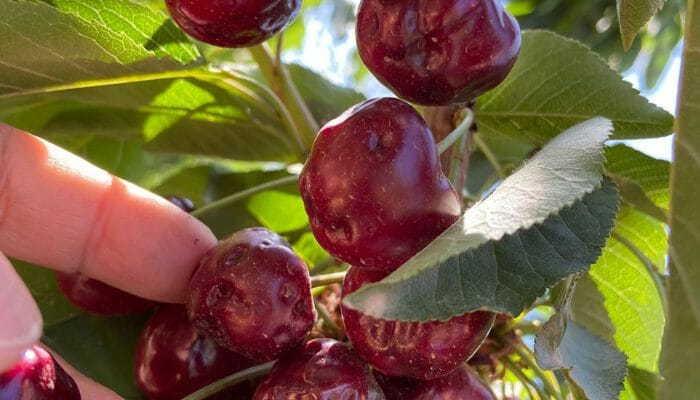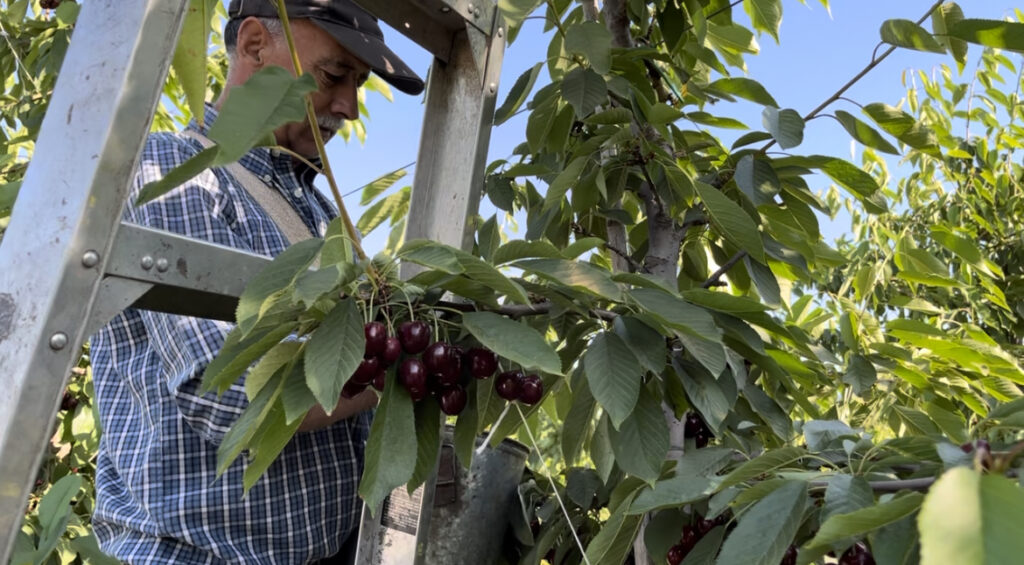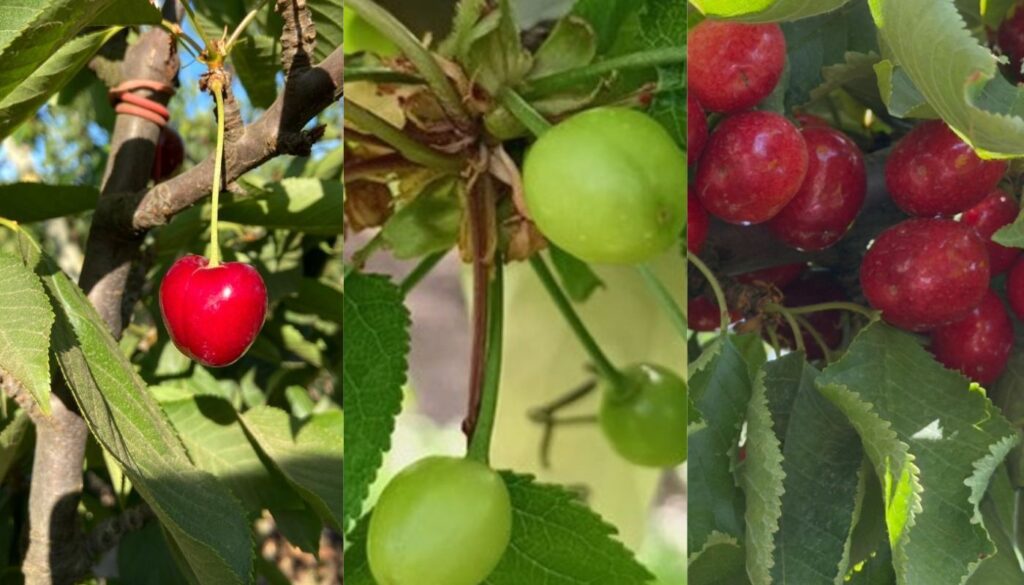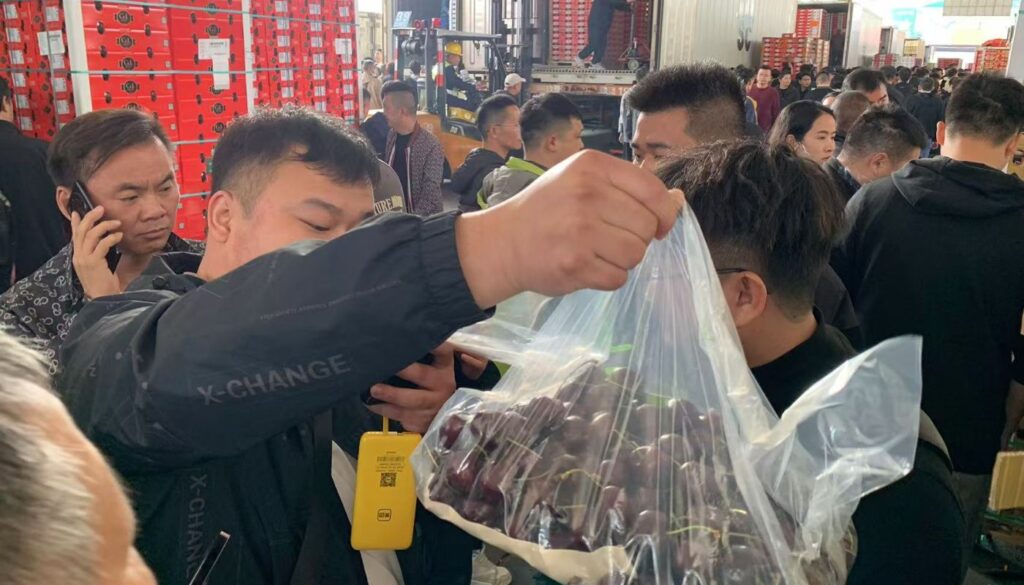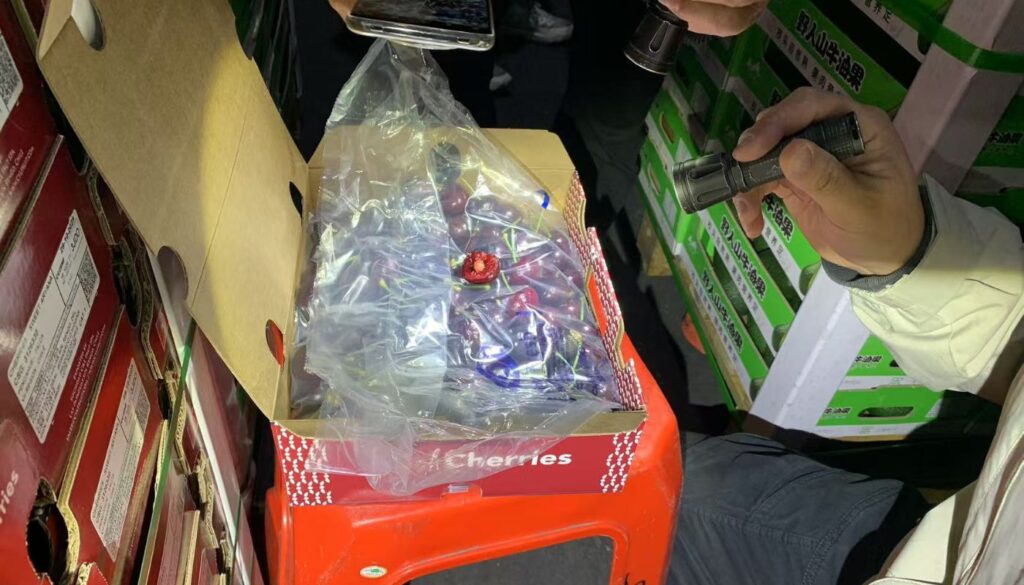Project led by Diagnofruit and promoted by the Foundation for Agricultural Innovation (FIA).
The production of Prunus, Cherries, peaches, nectarines, plums and apricots are an important economic activity worldwide. Currently, in Chile they are the most popular trees in the fruit industry, particularly cherries, which reached 415,398 tons exported in 2022-23, equivalent to 83.1 million 5 kg boxes, with estimated FOB revenues (free on board) close to US$$ 2.3 billion.

Despite this great success, these crops are susceptible to a wide range of viral diseases, which can cause significant losses in fruit production and quality, affecting the profitability of producers, making diagnosis and monitoring crucial for the sustainability of the industry.
Detection of the virus Prunus Necrotic Ring Spot Virus (PNRSV) in Chilean cherries by China in 2021 has brought viruses to the forefront of the country. However, this problem is not something new; the first cases of viruses in fruit trees in Chile were reported in the 1950s. The arrival of molecular techniques revolutionized the agricultural sector, and since 2000, research into viruses has been increasing, with an emphasis on early detection and management of these viruses and, today, achieving the development of valuable initiatives with the aim of generating rapid, reliable and low-cost responses.
In this sense, given the current scenario of climate change, globalization, accelerated varietal change and generation of Monomarkets, the risk of detecting pests and diseases has increased. In particular, the sustained growth experienced by the national industry of Prunus, influenced by cherry cultivation, has focused attention on the local development of phytosanitary management strategies and in the area of diseases, and in this sense, viral diseases are always those that have the least dedication, for this reason projects that delve into this problem are essential for sustainable production.
Figure 1. Symptoms associated with viruses in Plum var. Blue Gusto.
It is important to note that viruses in stone fruits can be difficult to detect, as there are not always visible symptoms, leading to the silent spread of the disease. Therefore, having standardized, sensitive, rapid and low-cost protocols for their detection in the stone fruit industry is key. In this sense, the initiative will significantly contribute to their identification, which will facilitate the implementation of effective control and prevention measures and avoid the spread of viruses to other geographical areas.
Currently, the most commonly used technique to find viruses in plants is the Polymerase Chain Reaction (PCR). However, most existing PCR assays are single-plex, meaning they can only detect one virus at a time, which is costly and inefficient.
In this way the project “Development of an innovative multiplex qPCR system and sampling method for efficient and low-cost detection of viruses in Prunus«, led by Diagnofruit Laboratories Ltda and driven by the Foundation for Agrarian Innovation (FIA) and partners including University of the Americas and fruit exporters: Frusan, Mace, Ranco Cherries (Rancagua Exporter) and Prize, aims to solve this problem by developing an innovative sampling system and a highly sensitive and specific multiplex real-time PCR analysis for the simultaneous detection of several viruses that affect the Prunus, generating a cheaper and highly sensitive service.
The project focuses on the development of RT-qPCR protocols associated with highly sensitive, specific, efficient and low-cost probes, with a local profile. This last feature will be achieved through the in-depth study of the genetic composition of virus populations. Prunus In Chile, using next-generation sequencing (NGS) to create a complete database of the national populations of these pathogens. Once the genomes of the most common viruses in Chile are known, specific primers associated with probes will be developed that will allow the variants of these species to be found in a single reaction. In addition, as a second tool, work will be done on an innovative system that will allow the collection of samples without sending plant material to the analysis laboratory. The idea is to have matrices for the extraction of genetic material in the field, optimizing its maintenance and facilitating transport to the laboratory, without needing refrigeration, for example.
Another aspect of the initiative is that it is included under the Public Good modality in the FIA bases, this means that all the protocols generated will be for public use, in this way Diagnofruit and its associates contribute to the generation of a sustainable stone fruit industry, considering safe trade as a key value in the sales chain.
The project is currently in the bioinformatics analysis stage of the results of the sequencing carried out abroad, characterizing viruses of Prunus and its variants present in Chile, to continue with the development of RT-qPCR probes and protocols for the detection of these viruses. In the future, extensions of the discoveries will be made, which will include manuals and training to install the techniques developed in laboratories nationwide.
Figure 2. RNA extractions from Prunus spp. with virus-associated symptoms for NGS.


